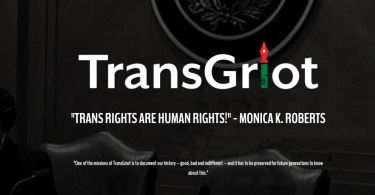The following poetry portfolio received the 2024 Hogan/Schell Undergraduate Award from the...
Category - Recent News
Who “deserves” to win?: Controversy over the first trans woman darts player to win a women’s tournament
In late March, Noa-Lynn van Leuven, currently ranked as the sixth best women’s darts player in the...
Let’s Update TERF for 2024
A fun photo edit of Canadian activists making TERF’s uncomfortable. TERF (Trans Exclusionary...
What does USA Boxing mean by “safety” in their controversial new Transgender Policy?
On January 30, 2024, USA Boxing released an open letter in response to the widespread criticism...
Unghosted! Supporting Asian Diasporic Trans, Nonbinary and Gender-expansive Voices
Guest Post by Ching-In Chen In 2019, Jennifer Chang invited me to give a Secret History talk for...
Trans People Are Not Laughing
Once again, the worlds of entertainment and politics have collided to ask whether it is...






